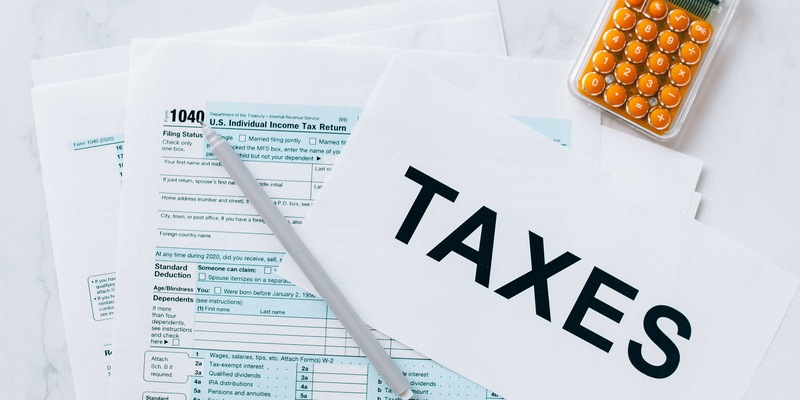Progressive Taxation: A Deep Dive into Its Benefits, Challenges, and Economic Impact
One of the most powerful weapons a government possesses to influence economic policy, reconcile oligarchic income, foster social justice, and ensure financial stability is through taxation. The progressiveness of any tax system, how much tax rates match an individual's ability to pay, is the most critical part of the fairness of any tax system. A progressive tax system is, by design, with tax rates rising the more income people earn and falling the more they earn.

In this discussion, we will look at the pros and cons of progressive taxation and its economic and social effects. In the context of many contemporary tax systems, vertical structures have gradually evolved into progressive tax avenues, and it is of paramount importance to understand how the latter contributes to building an equitable society and a healthy economy.
Progressive Taxation: The Mechanics
A progressive tax system at heart works on the premise of income brackets linked with tax rates that deploy progressive tax systems. Income is normally divided into certain ranges, or brackets, which are taxed at different rates. For instance, a person may pay 10 percent on income up to 10,000, 20 percent on income from 10,000 to 40,000, and 30 percent on income over 40,000. That structure ensures that high-income earners pay a greater proportion of their income in taxes while low-income earners pay a comparatively small proportion.
Thus, progressive taxation has also been widely adopted in the United States, Canada, and most European countries because it provides a means to pursue equity while generating essential government revenue. But, like any economic policy, it has its challenges and trade-offs, and there are debates about how effective it is, what effect it has on economic growth, and whether it drives social mobility.
Progressive tax rates serve as an income redistribution tool, directing funds from high-income earners to support government spending on public goods and services. This redistribution aspect is what distinguishes progressive taxes from flat or regressive taxes, where either a uniform tax rate applies to everyone (in the case of flat taxes) or lower-income groups bear a greater relative burden (in the case of regressive taxes, such as certain sales taxes). The principle behind progressive taxation is based on the idea that those with a greater ability to pay should contribute more to the upkeep of public services, which, in turn, benefit society as a whole.
Advantages of Progressive Taxation
Progressive taxation is one of the most important ways of equalizing income. Income inequality, meanwhile, has been rising for decades in many societies, with a chasm between the very richest and everyone else. Progressive tax systems help level the playing field by redistributing income from the richest portions of the population to finance social programs, health care, education, and infrastructure, which benefits everyone, but most especially low and middle-income people. By narrowing the income gap, progressive taxation contributes to a more balanced and equitable society, addressing some of the root causes of poverty and limited social mobility.
Another advantage is the potential for increased government revenue. Since progressive taxes impose higher rates on those with higher incomes, the system naturally brings in more revenue from high-income earners, allowing governments to maintain or expand public services. This increased revenue is crucial for developing and supporting programs that improve citizens' quality of life, such as healthcare, education, public transportation, and social safety nets. Such programs, funded by progressive tax revenue, not only improve individual well-being but also support overall economic growth by creating a healthier, more educated, and productive workforce.
Progressive taxation can also help stabilize the economy during periods of economic downturn or recession. When the economy contracts and incomes fall, people move into lower tax brackets, reducing their tax burden and allowing them to retain more of their income, which can help maintain consumer spending. This self-adjusting mechanism acts as an automatic economic stabilizer, helping to mitigate the negative impact of economic cycles. Conversely, during periods of economic growth, people tend to earn more, pushing them into higher tax brackets and thereby increasing government revenue without the need for abrupt policy changes.
Disadvantages of Progressive Taxation

Progressive taxation has its upsides, but it has its downsides. The high earner also is a major concern for progressive taxes. However, critics say that high tax rates on upper-income brackets could discourage people from earning more, working more hours, or starting new businesses because they may feel a lot of their hard work would be going to taxes. It presents you with a disincentive perceived because fewer people will deem it satisfactory to risk or invest in new ventures if they think that they will get back more tax when they enjoy profits.
Another issue is the complexity of progressive tax systems, which often include multiple tax brackets, deductions, credits, and varying rates based on income level. This complexity makes tax administration more challenging, leading to increased compliance costs for taxpayers and higher administrative expenses for the government. Taxpayers may need to seek professional assistance to accurately file their returns, which can be costly and burdensome, particularly for small business owners and individuals with complex income streams. Additionally, governments may face higher operational costs in managing a progressive tax system, which could divert resources from other critical areas.
Conclusion
Progressive taxation remains a cornerstone of modern economic policy, designed to balance the goals of equity and efficiency in society. By redistributing income from high earners to fund public services, progressive tax systems help reduce income inequality, support economic mobility, and provide a steady source of government revenue that can adapt to economic conditions. However, the drawbackssuch as potential disincentives for high earners, administrative complexity, tax avoidance, and possible impacts on investmentpose challenges that policymakers must address to optimize the benefits of progressive taxation.












